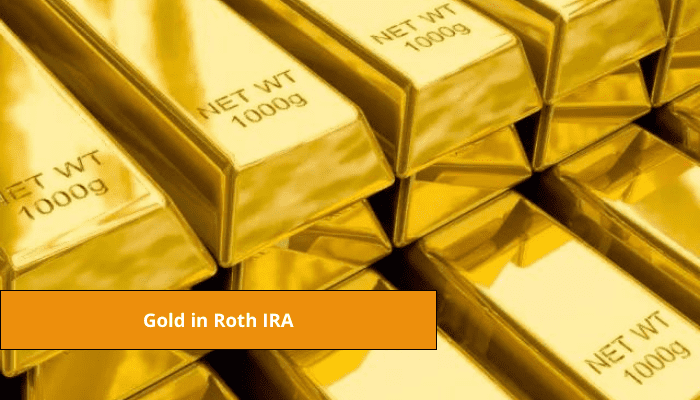- Our content is independently written and reviewed by trusted reviewers & fact-checkers.
- Your information is never sold. We can earn money by connecting you with top Gold IRA Companies. Learn how our reviews work.
- Want to learn more? Meet our authors and explore our editorial policy.

Gold has a long history of being perceived as a symbol of wealth and security. Many people still invest in physical gold, but nowadays, there is also another option for getting this valuable asset.
Namely, instead of buying physical metal bars, you can invest in so-called paper gold. It is important to consider the pros and cons of both options before you make your decision. Read on to learn more about the paper gold vs. physical gold comparison!
Table of Contents
Short Summary
- Apart from physical gold bars, you can now invest in paper assets like gold futures, gold certificates, ETFs, or gold mining stocks.
- The advantages of a paper gold investment include liquidity, no storage costs or concerns, and easy divisibility.
- The cons of buying paper gold are, for example, the market risk, no physical ownership, and the expense ratio.
- The pros of investing in physical gold involve tangibility, practical usability, and aesthetic value.
- The disadvantages of buying physical gold are, for instance, illiquidity, theft risk, and markups.
- There is no simple answer on which one is better – every investor must consider the pros and cons themselves or with the help of a specialist.
What Is Paper Gold?
You probably don’t have any problem with imagining physical gold bars, but paper gold may not ring any bells. To put it simply, it is a financial asset created to reflect the market price of gold for a particular moment, even though it is not gold per se. It is often referred to as a derivative of the gold market.
Paper gold investment makes it possible for the investor to achieve the present market value of gold without the necessity to own any physical metal bars. In this way, they can lower the premium and minimize the storage and insurance fees.
As a result, buying paper gold is often recommended more for trading purposes than a long-term investment.
There are a few types of paper gold:
Gold Futures
These contracts, traded on the futures derivatives market, are designed to sell or buy gold on a predetermined date at a predetermined price.
Trading gold (or silver) futures is quite difficult to navigate as a private investor because it is associated with substantial risk.
Gold Certificates
The US government was issuing gold certificates until the mid-1930s. They granted you a share in gold stored by the US Federal Reserve Banks.
When the US wound up its commitment to the gold standard in the 1960s, these certificates were invalidated.
Exchange Traded Funds (ETFs)
Typically, ETFs are shares of gold belonging to the fund. In fact, ETFs rarely hold physical gold. Instead, they include gold futures, so the promises to purchase gold, or the shares in gold owned by banks.
If ETF share prices do not comply with the real market price of gold, the fund’s manager can exchange blocks of 100,000 shares for 10,000 ounces of gold. Thanks to such an option, the ETF price can be kept more or less in line with the gold price. However, the prices can vary during the day.
Similar to stocks, you can trade ETF shares on the derivatives market. Most of the funds hold shares in bank gold or futures, so not many of them will let their investors redeem shares for physical gold. Instead, they will offer to exchange shares for money in most cases.

Commodity Pools Accounts
In Commodity Pools Accounts, investors can pool their assets to be able to make deals that could not be affordable for a single private investor alone. You can trade such pool accounts on gold futures markets.
Gold Mining Stocks
These are the stock market investments in gold mining companies. Such a paper gold investment is associated with more fluctuation and risk factors as they depend on the company’s location, age, infrastructure, and debt.
Junior mining stocks refer to newer start-ups that have riskier track records and are more prone to frequent fluctuations, as the organization is not yet experienced enough.
On the other hand, there are major mining stocks associated with powerful, well-functioning companies that already have a relevant performance history.
Moreover, it is important to remember that mining stock investments depend on market trends, not the prices of the physical gold.
What Are the Pros and Cons of Buying Paper Gold?
Before making a decision concerning a paper gold investment, you should be aware of its pros and cons. Here are some of the most significant ones:
Pros of Paper Gold
- Liquidity: Paper gold is a liquid asset, as you can buy or sell it in such forms as gold EFTs or gold mining stocks in a matter of milliseconds. You can easily check the market price of your paper gold investment at any minute. What’s more, if you cooperate with a zero-commission broker, you will not have to cover any fees for buying or selling it.
- No Storage Costs or Concerns: Contrary to physical gold, you do not have to store your paper gold in secure storage facilities and worry about advanced safety measures. As a result, you do not have the risks associated with protecting your assets or have to pay fees for keeping them safe.
- Accessible Divisibility: In the case of paper gold, there are no problems with divisibility. It means that an investor can sell or buy gold in smaller amounts, which makes this option more accessible to a larger scope of investors.

Cons of Paper Gold
- Market Risk: Paper gold may trade down in value even though the price of physical gold is increasing. Many different factors, including bad press, macroeconomic shocks, or supply and demand may cause it.
- No Physical Ownership: If you are buying paper gold, you will not be in direct possession of the physical asset. As a result, its value may decrease in a period of financial distress.
- Expense Ratio: Even if you do not have to pay a commission to possess paper gold, you will probably have to cover the ongoing annual costs as an expense ratio. Your fund will automatically deduct any fees that are necessary for paying its managers or covering trading expenses, overhead costs, etc. All of that will contribute to the reduction of your total return.
Pros of Physical Gold
- Tangibility: A significant advantage of physical gold is that you can actually feel it with your senses – it can be seen, touched, and held. In times of economic trouble, investors often value physical gold as the key to a stable future more than in the case of paper assets.
- Practical Use: Apart from being a commonly used currency and store of value throughout centuries, physical gold can also be used to make various items, such as jewelry, decorations, or even industrial products.
- Aesthetics: An additional benefit of owning physical gold is that it is very pleasant to the eye. As a matter of fact, its beauty was one of the main reasons why it has been so much valued throughout history.
Cons of Physical Gold
- Risk of Theft: As gold is highly valued, it is often pursued by thieves. Protecting your physical assets may require adding advanced security measures, especially when you are storing your gold bars at home. It can be a cause of additional concerns and higher expenses.
- Illiquidity: Obviously, you can always sell your gold, but it may not be that easy to get the price you want. There is no open market for buying and selling physical gold, so you will have to cooperate with a dealer who will decide on the final price. What’s more, executing the transaction can be longer.
- Markups: Physical gold is typically around 99.9% pure, so it is not hard to tell what its “real” value is. Sadly, when you are investing in physical gold, you will always have to pay more than the actual market value of gold because there needs to be a profit for the dealers.
Physical Gold vs. Paper Gold – The Final Note
As you can see, there is no single answer to the question of whether buying paper gold or physical gold is a better investment. Both of them have their pros and cons that need to be taken into consideration when you make your decision.
You should make all the necessary calculations by yourself or ask an expert for help so that your physical or paper gold investment is best suited to your expectations and capabilities and creates more chances for you to gain profit.

For further profitable tips on investing in gold, you are more than welcome to browse through our website and learn about it from our knowledge base. If you need even more help and you have some questions or doubts, contact our professional team now!
Article Sources
At Gold IRA Blueprint, we dive deep into the world of gold IRAs, using trusted sources to back up our insights. Our sources range from official documents to expert interviews, ensuring our content is both accurate and reliable. We also draw on research from reputable publishers to give you the most comprehensive understanding possible. Check out our editorial policy to see how we maintain our high standards for accuracy and fairness. Also make sure to check out our Financial Review Process to have a better understanding of our process.













